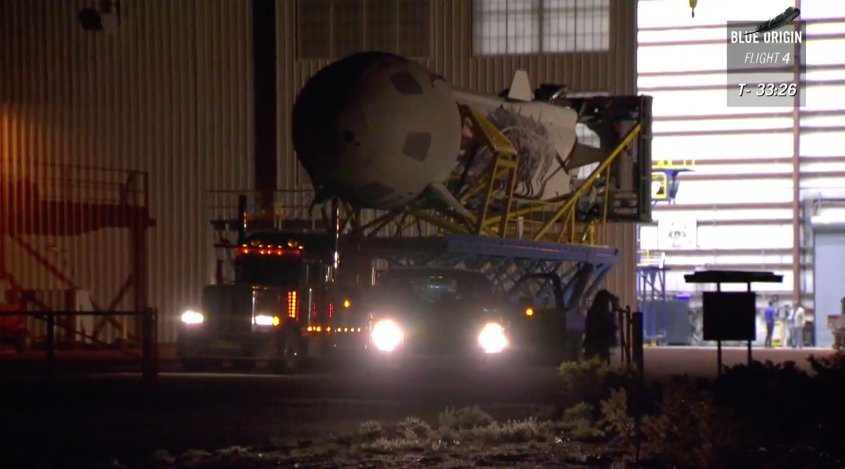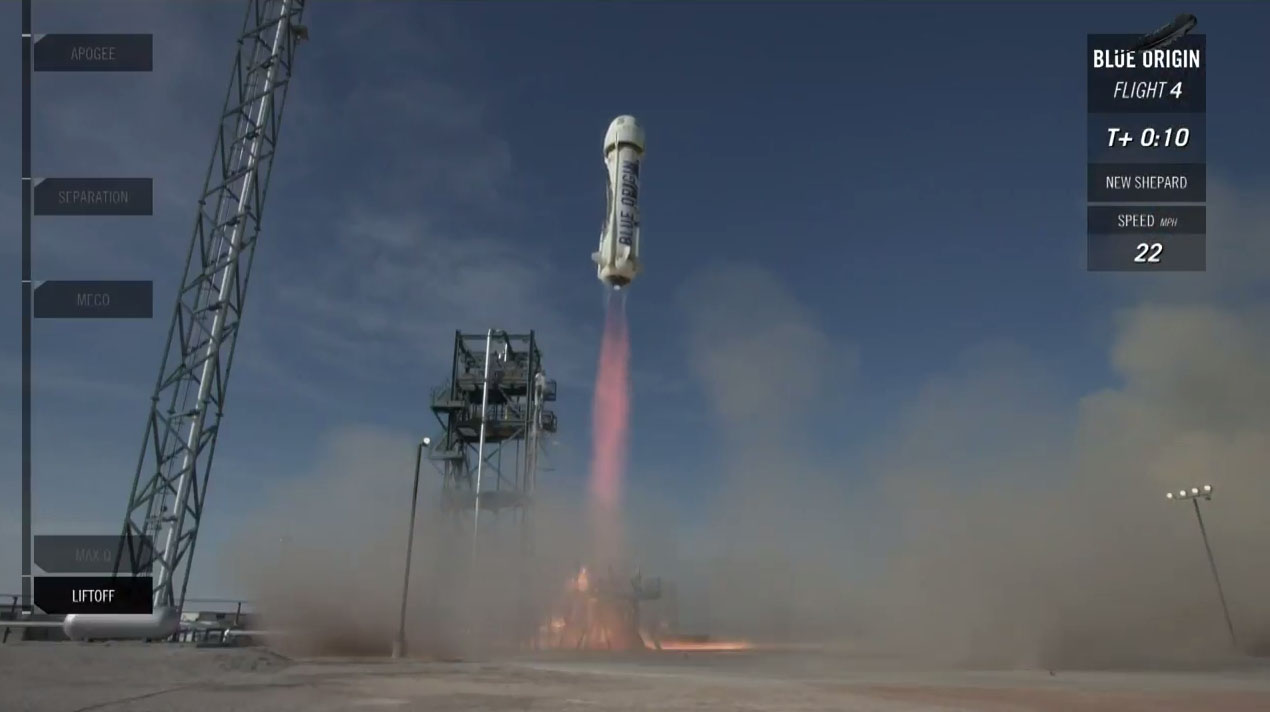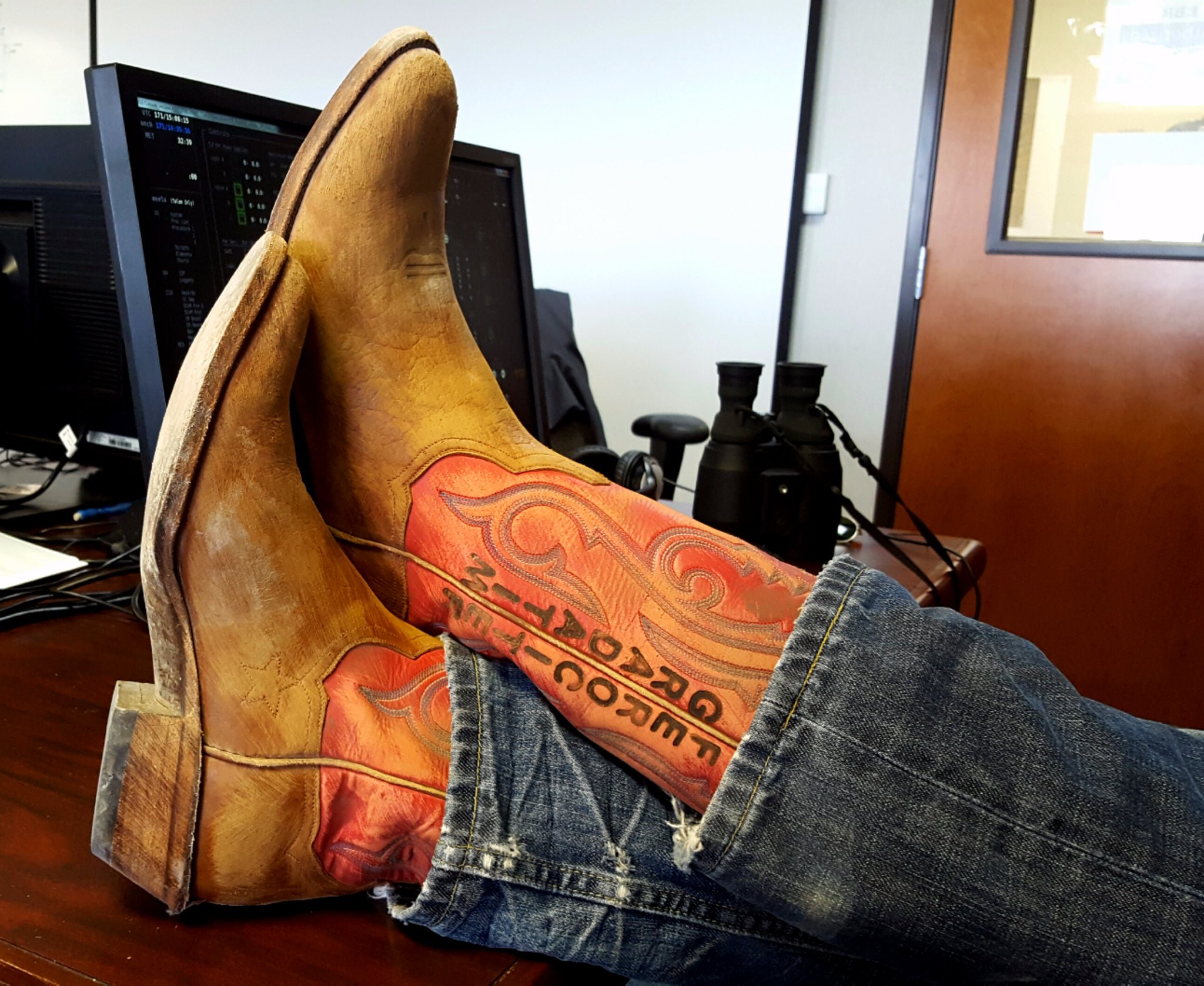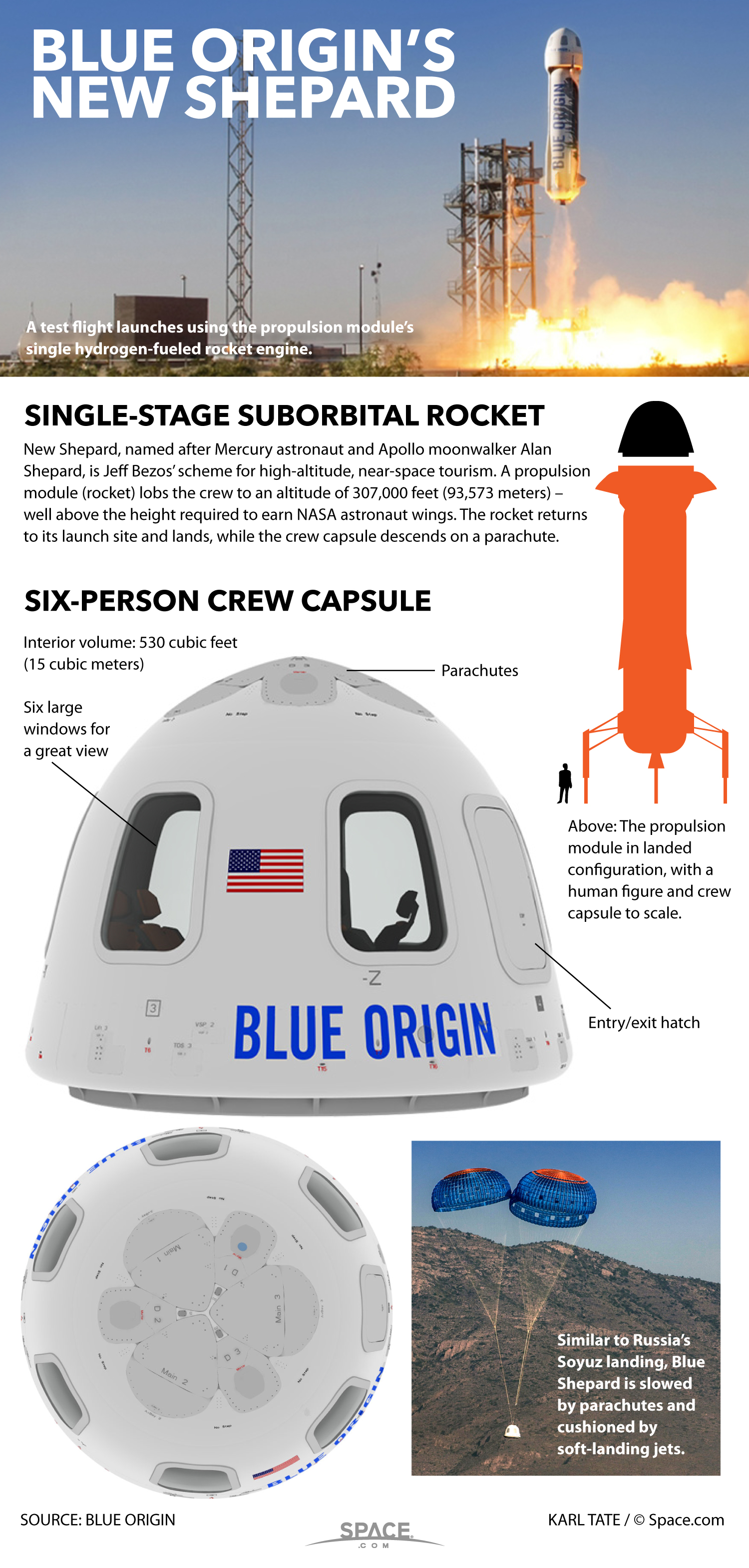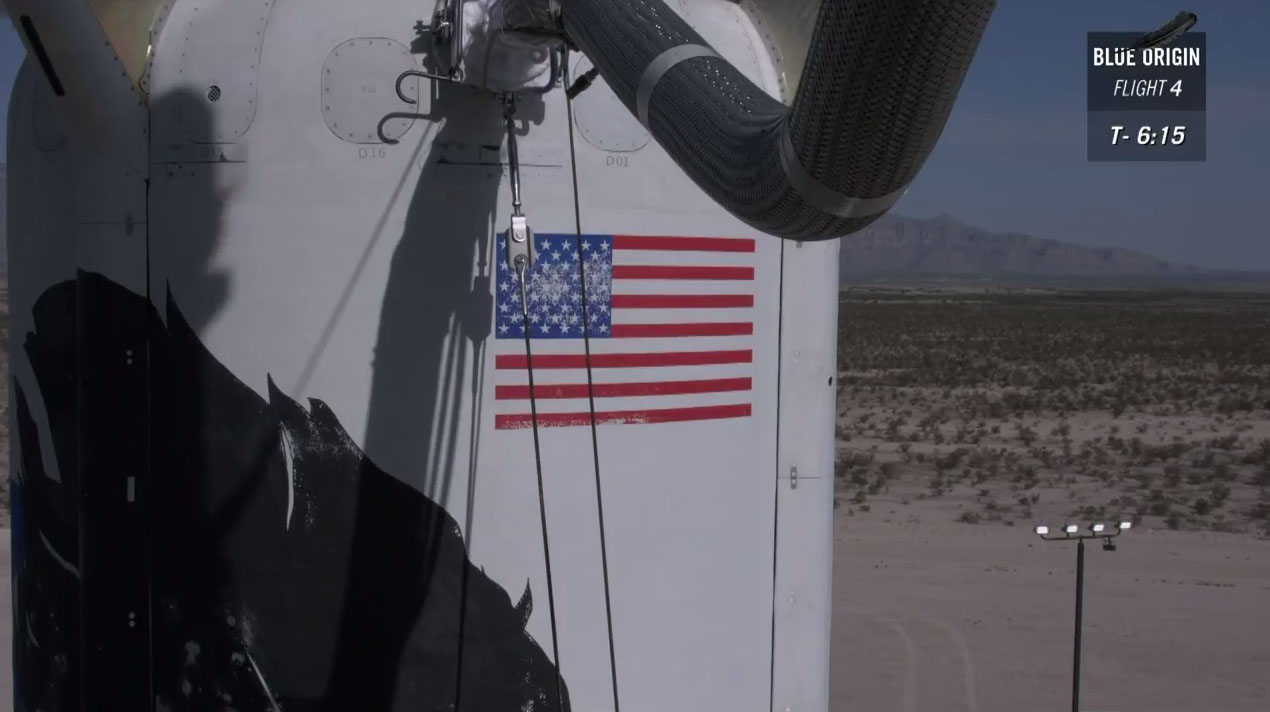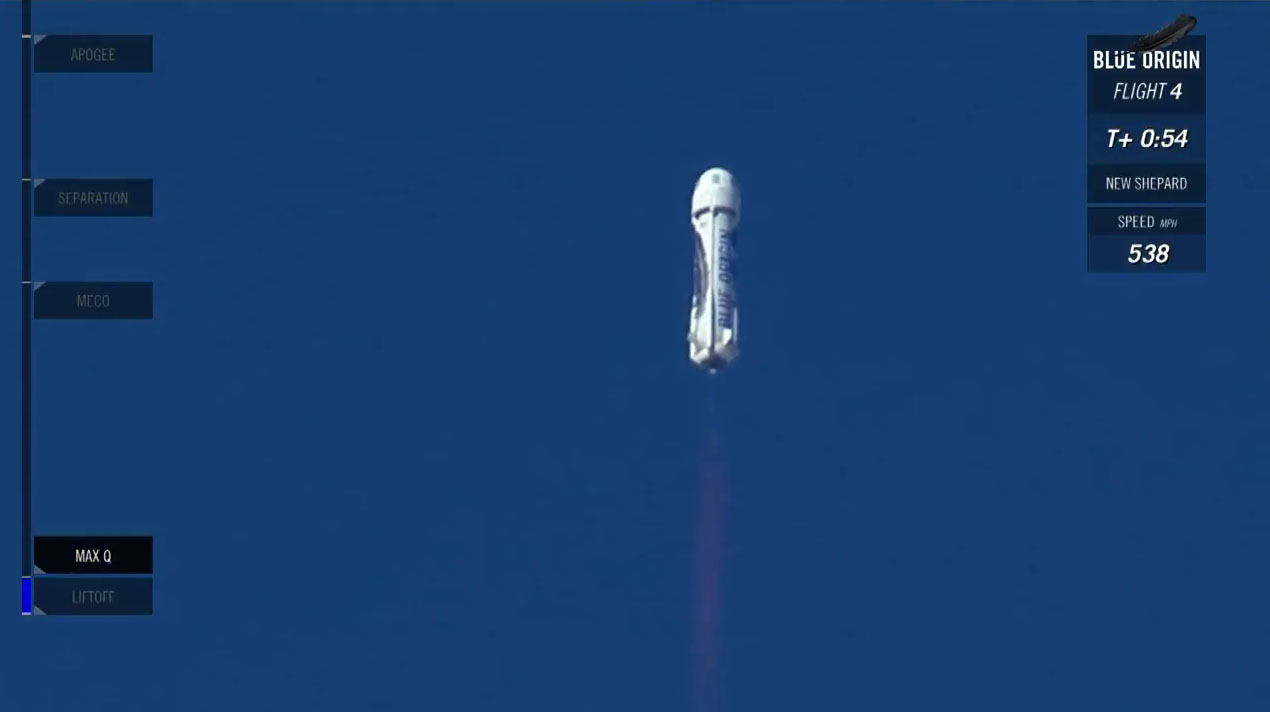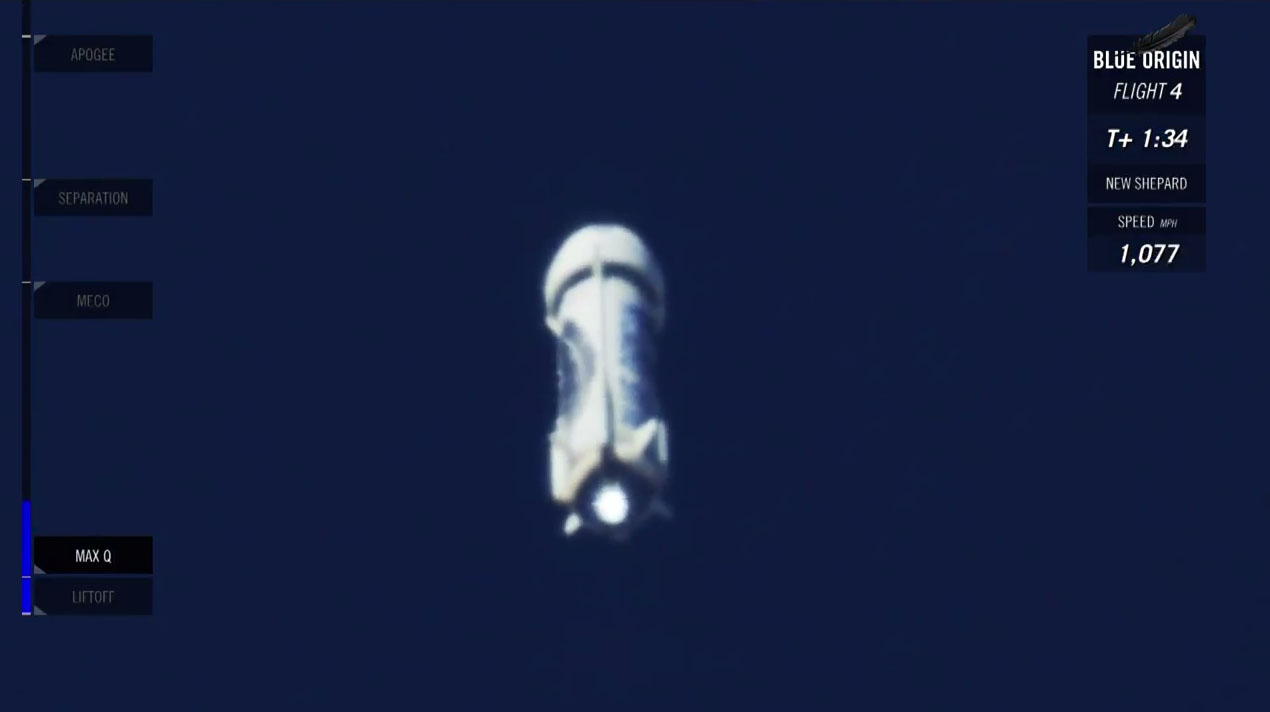Blue Origin's 4th Reusable Rocket Launch and Landing in Photos
Blue Origin Flight 4
On June 19, 2016, Blue Origin launched its reusable New Shepard rocket and space capsule for the fourth time from the company's West Texas proving grounds - this time webcasting the launch live online while also testing a two-parachute capsule landing. See photos from the launch here by clicking the arrows at the right of each image. Read our full story on Blue Origin's 4th successful launch.
Rollout for New Shepard
Blue Origin rolls its New Shepard rocket and capsule out to the launch pad in West Texas on June 19, 2016 ahead of the fourth test flight for the suborbital reusable launch system. Read our full story on Blue Origin's 4th successful launch.
Ready to Fly
Blue Origin's New Shepard suborbital rocket and booster seen from a far. The June flight marked its fourth mission since November 2015. Read our full story on Blue Origin's 4th successful launch.
Liftoff!
At 10:36 a.m. EDT (1436 GMT), Blue Origin's New Shepard rocket soared into space to begin its fourth test flight. Read our full story on Blue Origin's 4th successful launch.
Lucky Boots
Billionaire Jeff Bezos shows off his "lucky" boots after his Blue Origin company's successful launch and landing of the New Shepard rocket booster and capsule in West Texas on June 19, 2016. Read our full story on Blue Origin's 4th successful launch.
How Blue Origin's Suborbital Rocket Ride Works (Infographic)
Amazon.com founder Jeff Bezos leads Blue Origin, a commercial aerospace firm that hopes to send people on suborbital and orbital space trips. See how Blue Origin's New Shepard spacecraft works here.
Next Stop: Space
New Shepard ascends toward space on its fourth suborbital test flight. Read our full story on Blue Origin's 4th successful launch.
Breaking space news, the latest updates on rocket launches, skywatching events and more!
A Grand Old Flag
The American flag has a special place on the New Shepard booster rocket. Read our full story on Blue Origin's 4th successful launch.
Ascent
New Shepard continues its ascent during the launch phase of its fourth test flight. At its peak, New Shepard would reach an apogee of 331,501 feet, or about 62.7 miles (101 kilometers), higher than the recognized 62-mile border between Earth and space. Read our full story on Blue Origin's 4th successful launch.
The Powerhouse
Blue Origin's New Shepard is powered by a single BE-4 rocket engine that uses liquid hydrogen and liquid oxygen for propellant. The engine is used for both the launch and landing. Read our full story on Blue Origin's 4th successful launch.
Capsule Separation
This image shows a clear view of the New Shepard booster rocket (left) and its space capsule flying separately after separation. Inside the capsule were three university research payloads that used the several minutes of weightlessness provided by the flight to take science data. Read our full story on Blue Origin's 4th successful launch.

Tariq is the award-winning Editor-in-Chief of Space.com and joined the team in 2001. He covers human spaceflight, as well as skywatching and entertainment. He became Space.com's Editor-in-Chief in 2019. Before joining Space.com, Tariq was a staff reporter for The Los Angeles Times covering education and city beats in La Habra, Fullerton and Huntington Beach. He's a recipient of the 2022 Harry Kolcum Award for excellence in space reporting and the 2025 Space Pioneer Award from the National Space Society. He is an Eagle Scout and Space Camp alum with journalism degrees from the USC and NYU. You can find Tariq at Space.com and as the co-host to the This Week In Space podcast on the TWiT network. To see his latest project, you can follow Tariq on Twitter @tariqjmalik.

